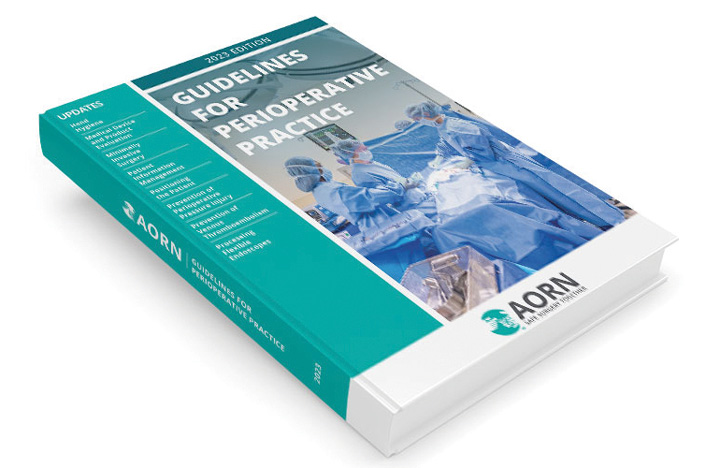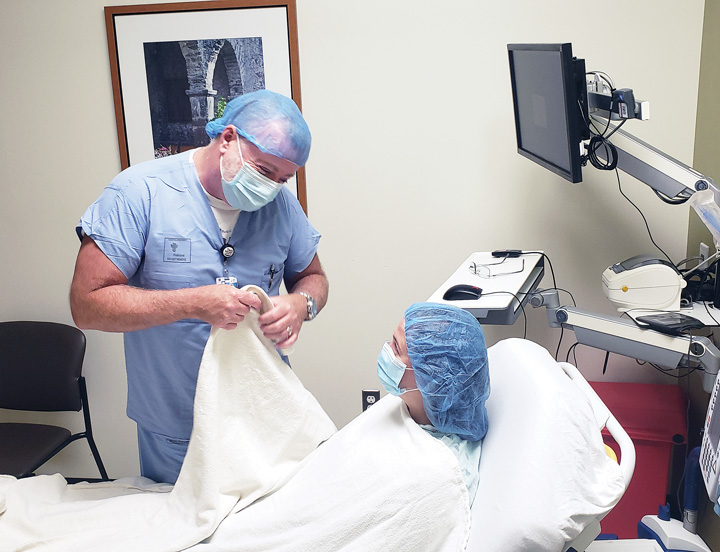- Home
- Article
How Do You Improve Patient Safety?
By: Danielle Bouchat-Friedman | Senior Editor
Published: 11/20/2023
See how your facility stacks up when it comes to fully engaged time outs, endoscope care and more.
Can you confidently say that your facility embraces a culture of safety and transparency? Do you promote open communication with the opportunity to learn from errors and near misses? An Outpatient Surgery Magazine survey asked readers to share how they keep their patients safe, and the struggles and challenges they continue to face. Check out the results and see how your facility ranks among other ASCs and HOPDs around the country.
Engaged time outs
One of the most notable survey findings was our readers’ response to fully engaged time outs. Two-thirds of respondents say they always have them, while 30% of respondents said they usually have them. Just 3% say they sometimes have them, and none of the respondents state they rarely or never have them. Sara Lay, surgical administrator at Oregon Eye Surgery Center in Eugene, says fully engaged time outs are “not negotiable; it must be a fully engaged time out every time.”
Julia Carpenter, RN, OR nurse manager at Clay County Healthcare Authority in Ashland, Ala., states that while her facility always has fully engaged time outs, “sometimes we have to remind the surgeon that we are currently engaging in a time out.”
A clinical coordinator at a medical center in Arkansas notes her staff has flashcards that accurately depict all the elements of the time out in each room for the circulator to read out loud during the time out. “However, circulators do not make sure all the team engages during the time out,” she notes. A staff member at a surgery center in Minnesota states they don’t always have fully engaged time outs because “there is one surgeon who is resistant and would rather proceed without the time out.”
Safe to speak up
When asked if physicians encourage team members to speak up when they have concerns before the procedure begins, the results were mixed. Nearly 37% responded that this always happens, while one-third say they usually do. Larry Asplin, MSN, CSSM, CNOR, FAORN, interim manager of perioperative services at Meeker Memorial Hospital in Litchfield, Minn., states that physicians usually encourage team members to speak up when they have concerns before the procedure begins. “Not all doctors are on board, even when we remind them,” he says. A staff member at a surgery center in Minnesota, who was part of the nearly 7% of survey respondents who say physicians rarely ask team members to speak up, noted that doing so “is not in our script.”
Ten percent of survey respondents note that physicians only sometimes encourage team members to speak up, while a disheartening 13% state that their physicians never encourage them to do so.

The updated AORN Guideline for Medication Safety provides recommendations on safe medication management practices in the perioperative setting to help decrease the risk of medication errors. There are significant revisions in every section of the updated guideline, notes Julie Cahn, DNP, RN, CNOR, RN-BC, ACNS-BS, CNS-CP, AORN senior perioperative practice specialist and lead author, including:
Organizational oversight
A healthcare organization’s antimicrobial stewardship committee should regularly review and offer recommendations on how to improve care processes for perioperative patients that involve the routine use of antibiotics. “This recommendation is intended to emphasize the importance of oversight of the routine use of antibiotics in surgery,” notes Dr. Cahn. The guideline also recommends that an interdisciplinary team comprised of perioperative nurses, pharmacists, infection preventionists, anesthesia professionals, information technology staff members, nurse informaticists and other key stakeholders should collaborate to create a process for dealing with medication shortages that can affect the care of perioperative patients.
Compounding
Contamination and quality issues in compounded medications have made their procurement more intricate. “I think of procuring or preparing compounded medications on a continuum that includes primary and secondary strategies. The primary strategies for compounded medication procurement are outlined as new recommendations in the updated guideline,” says Dr. Cahn.
Labeling
The recommendations for medication labeling were modified slightly. “Important points in the recommendation updates include labeling everything that changes containers, no matter where it is (even off the sterile field), and no longer needing to label with the date and time the medication was accepted onto the sterile field,” says Dr. Cahn.
Hazardous medications
The guideline expanded its recommendations about interventions to decrease the risk of exposures to antineoplastic agents during hyperthermic intraperitoneal chemotherapy (HIPEC), hyperthermic intrathoracic chemotherapy (HITOC) and pressurized intraperitoneal aerosol chemotherapy (PIPAC) procedures. “New evidence emerged related to environmental contamination and aerosolization of antineoplastic medications when handling them during these procedures,” she says.
Technology
A new section on technology was added to the guideline, noting that the use of technological devices should be standardized when possible. “Technology is an integral part of the perioperative medication use process,” says Dr. Cahn. “While these devices are intended to prevent harm and streamline medication use processes, when personnel do not use them as intended, an increased risk for near misses and medication errors can result.”
— Danielle Bouchat-Friedman
Medication safety
When asked which solutions our readers favor to ensure correct medications are given to the correct patients and disposed of properly after use, 72% of survey respondents note their facilities use disposable receptacles that render controlled substances non-retrievable. Pre-printed medication labels are used by 48% of respondents, and 44% utilize prefilled syringes. Only 28%, however, use barcode scanning.
Instead of pre-printed medication labels, Ms. Carpenter says her facility utilizes write-on labels. “We make sure to label every syringe, cup, basin, etc.,” she says.
Robin Merritt, RN, BSN, MBA, CNOR, specialty coordinator at ROC Surgery Center in Indianapolis, states that her facility uses both pre-printed medication labels as well as disposable receptacles, but her staff takes it a step further. “We always check medications with a second person before administering anything to a patient,” she says.
Tampa Bay Hand Surgery Center in Florida uses pre-printed medication labels, prefilled syringes and disposable receptacles. The benefit of these methods, according to Administrator Tara Young, MBA, BSRS, HCA, RT(R)ARRT, CPC, is that her staff “reads and repeats the name of the medication to make sure it is correct. We also make sure that two staff members are on hand to draw up a medication.”
A clinical coordinator at a medical center in Arkansas notes that while her facility uses disposable receptacles, the facility’s current charting system doesn’t give them the ability to utilize barcode scanning. Regardless of which methods your facility uses to ensure correct medications are given to the correct patients and disposed of properly after use, every one of them can help reduce the risk of medication errors and confusion, notes an administrator from a medical center in Louisiana.
Which patient warming method do you use most often?
- Warmed cotton blankets: 38%
- Forced-air warming: 52%
- Conductive polymer fabric: 0%
- Thermal underbody mattress or pad: 7%
- Radiant heating technology: 0%
- We don’t warm patients: 3%
What do you use to improve endoscope care?
- Closed transport containers: 36%
- Borescopes to inspect internal channels during reprocessing: 25%
- Storage cabinets with integrated channel-drying systems: 32%
- Automated internal channel-drying systems: 11%
- Tests, such as ATP that detect microbial growth in channels after reprocessing: 36%
- N/A: 43%
— Danielle Bouchat-Friedman
Wrong-site surgery

No one ever wants to admit that their facility has experienced a never event, such as a wrong-procedure, wrong-patient or wrong-site surgery, or a retained object or patient burn, but 63% of our survey respondents share that they have experienced a never event, either at their current facility or previous place of employment.
Nina Johnson, RN, surgery coordinator at York (Pa.) General Hospital, says that at the previous facility where she worked, a surgeon confused the right foot for the left because the patient was in the prone position and the marking on the top of the foot was not visible. “Luckily, that patient needed the same operation on the other foot, but left foot was supposed to be operated on first because it was the more difficult surgery,” she says.
At another facility, she recalls a trauma patient coming in after a bad car accident. “The patient had field X-rays and the right arm and left arm were mislabeled,” she says. “The surgeon made an incision in the wrong wrist and of course, couldn’t find an injury.”
A clinical coordinator at a medical center in Arkansas recalls a time when a surgeon operated on the wrong hip. “The X-ray was labeled right when it was actually left, so the surgeon went by the laterality of the X-ray.” Many of our survey respondents note that a never event can lead to significant and positive change. Many use the events as teaching moments so that they can hopefully prevent them from happening in the future.
Share your secrets
While many facility leaders are already making sure patient safety is front and center, many are actively look for more ways to improve. In fact, nearly 77% note they are always looking for more ways to enhance patient safety. For example, to prevent transcribing errors, the surgical staff at York General Hospital cut patient transport slips off of the printed schedule and post them on a whiteboard.
At Oregon Eye Surgery Center, implanted devices go through quadruple verification prior to insertion, with the last verification happening just prior to implantation. “This occurs at the surgical table with a verbal exchange between the circulator and the scrub tech,” says Ms. Lay. “The implant is also a part of the time out during every case.”
At Merced (Calif.) Vein & Vascular Center, the staff created a picture calendar to show patients when to start and stop their blood thinners, anti-diabetic medication or bridge therapy. “This helps so much, because patients can see the instructions as well as read them,” says Chief Nurse Executive Julie Goza. No matter how your patient safety methods stack up, there is always room for improvement. Don’t get complacent. Take the time to actively look for innovative solutions. OSM
.svg?sfvrsn=be606e78_3)
.svg?sfvrsn=56b2f850_5)